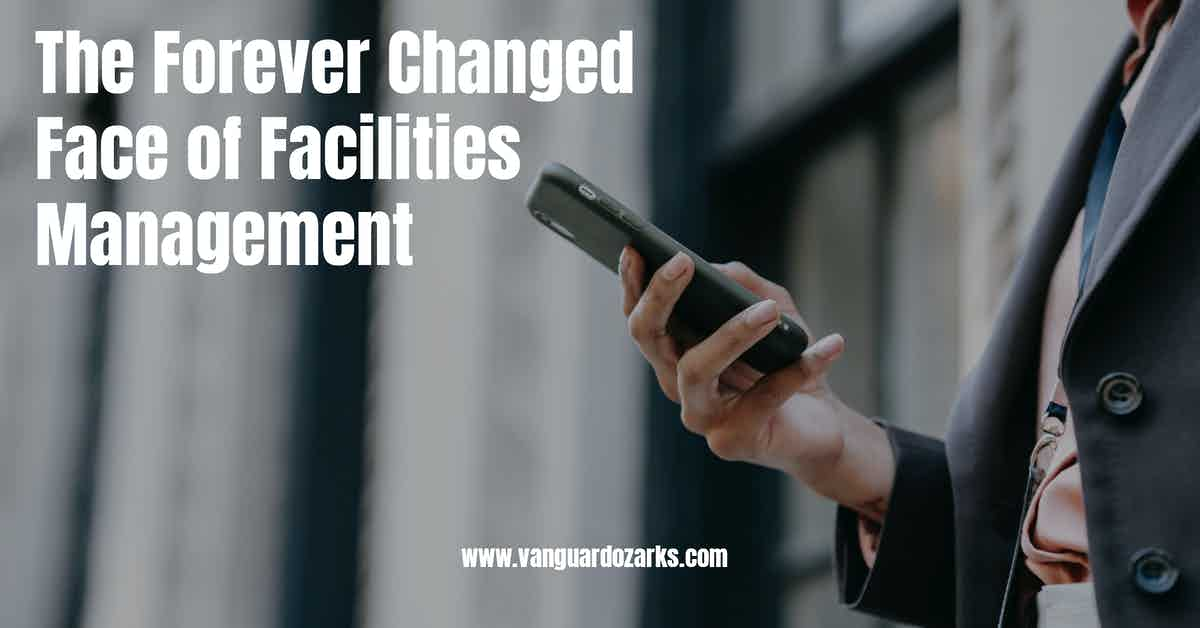The COVID-19 pandemic has forever changed the face and focus of facilities management, specifically in the areas of indoor air quality, the role HVAC systems play in IAQ, and the permanent implementation of enhanced cleaning for health protocols that focus on ensuring occupant wellness and safety.

How COVID-19 has Forever Changed the Face of Facilities Maintenance and Management
For years, those focused on cleaning for health in public facilities have advocated for smarter cleaning measures and facilities maintenance practices that put occupant wellness and safety first.
The COVID-19 pandemic destroyed age-old misconceptions regarding the purpose and definition of clean while shining a light on the fundamental flaws inherent in conventional building design and maintenance.
Two of the most prominent solutions to the most devastating challenge of our time--measures which you can expect to see entrenched as permanent mainstays in future building design and maintenance--are:
- Increased external airflow and improved HVAC function and maintenance, and;
- Increased cleaning frequencies focused on building occupants' behavior and health, and the most common ways diseases are spread.
HVAC System Improvements, Maintenance, and Airflow to Address Occupant Health and Pathogen Transmission
Pioneers of green building design and improved occupant health have long advocated for increased airflow inside buildings via advanced HVAC systems that destroy and filter dust, allergens, pathogens, and spores from the air as it is circulated.
These aims can be achieved by introducing MERV 13 or higher rated air filters combined with UV-C lighting fixtures inside air ducts.
Additional guidelines from the Occupational Health and Safety Administration (OSHA) regarding HVAC system use and facility airflow in the fight against COVID-19 and future outbreaks include:
- Increasing the HVAC system's outdoor air intake.
- Opening windows when and where practical to aid in air circulation throughout the day and especially when cleaning.
- Preventing exhaust air from being pulled back into the building via fans or open windows.
- Deploying HEPA filtered commercial-grade air cleaners.
- Removing individual-use fans from occupant spaces to prevent air blowing from one person to another, and;
- Regularly checking on and cleaning or repairing exhaust fans in restrooms.
In regards to HVAC system maintenance, a subject of some debate is the practical need for air duct cleaning--is it or is it not necessary as part of a regularly scheduled maintenance program to protect occupant health.
According to the U.S. Environmental Protection Agency;
The bottom line is: no one knows.
There are examples of ducts that have become badly contaminated with a variety of materials that may pose risks to your health.
The duct system can serve as a means to distribute these contaminants throughout a home. In these cases, duct cleaning may make sense.
However, a light amount of household dust in your air ducts is normal.
Duct cleaning is not considered to be a necessary part of yearly maintenance of your heating and cooling system, which consists of regular cleaning of drain pans and heating and cooling coils, regular filter changes and yearly inspections of heating equipment.
Research continues in an effort to evaluate the potential benefits of air duct cleaning.
As a final thought, increased airflow goes beyond combatting pathogen transmission to increased occupant wellness and performance, which has been shown to offset operational fees and the cost of upgrades.
[R]esearchers found that doubling the ventilation capacity also doubled cognitive function test scores.
Extending the value of that increased productivity through a full year led to an average of $6,500 for each worker, the team estimated.
That figure doesn’t include the value of fewer sick days, which increases the savings.
And yet, the cost of doubling the ventilation capacity averages only $14 to $40 per occupant per year.
Exactly how ventilation improves health is an area of active research, but scientists know that high humidity and rising carbon dioxide concentrations cause people to feel stuffy and tired.
The impacts of volatile organic compounds (VOCs) from off-gassing materials are also not well understood, but that’s also another area of study at Harvard.
Increased Cleaning and Disinfection Frequencies
The COVID-19 pandemic resulted in a massive increase in cleaning and disinfection frequencies across the board, and for a good reason.
According to recent findings from the National Institutes of Health, the increased focus on cleaning and disinfecting is for good reason.
Scientists found that the virus that causes COVID-19 can be detectable in the air for up to three hours, on copper for up to four hours, on cardboard for up to 24 hours, and on plastic and stainless steel for two to three days.
The Centers for Disease Control and Prevention (CDC) report that it may be possible that a person can get COVID-19 by touching a surface or object that has the virus on it and then touching their own mouth, nose, or eyes.
However, the increased use of disinfectants, specifically bleach, resulted in unintended consequences among several vulnerable demographics, resulting in asthmatic reactions--a significant negative during an outbreak of a respiratory illness.
According to The Washington Post;
Researchers who surveyed 795 U.S. adults with asthma between May and September found the proportion who disinfected surfaces with bleach at least five times a week rose by 155 percent after the pandemic started.
Use of disinfectant wipes, sprays, and other liquids also increased, the researchers reported in the Journal of Allergy & Clinical Immunology: In Practice.
After accounting for other behaviors and risk factors, higher odds of having uncontrolled asthma were linked with greater household use of disinfectant wipes, disinfectant sprays, bleach and water solutions, and other disinfecting liquids.
The Centers for Disease Control and Prevention advises asthmatics to ask someone else to clean and disinfect surfaces and to stay in another room when cleaners or disinfectants are used and right afterward.
It also said soap and water may be sufficient for surfaces and objects that are seldom touched.
The middle ground which accounts for occupant health, intelligent eradication of viral germs and bacteria, and environmental safety require:
- The use of cleaning and disinfection products that consider occupant demographics.
- Upgrading cleaning and disinfection application tools to improve efficacy and resource management, and;
- A detailed cleaning plan that addresses occupancy and use.
In laymen terms:
- By far and large, soap-based commercial detergents are sufficient to remove soil and most surface-resident pathogens and can be used safely and liberally throughout a facility.
- Disinfectant wipes should be used several times per day on high-touch surfaces by trained personnel wearing appropriate personal protective equipment.
- Electrostatic disinfection appliances and no-touch vacuum scrubbers should, and likely will, replace conventional application methods due to increased efficiency and demonstrated effectiveness.
References & Resources
- Forever Changed: The Pandemic's True Influence on Buildings
- Many Pandemic Facility Changes Are Here to Stay
- COVID-19 Guidance on Ventilation in the Workplace
Takeaway
Going forward, enhanced cleaning and facilities maintenance practices will be a fundamental part of our daily lives.
Working with your janitorial service provider now can help you identify areas of need or concern that should be mapped out and addressed as soon as possible to meet consumer and occupant demand.
Outsourcing planning, management, cleaning, and maintenance services to an experienced provider is a proven method for addressing cost controls, training and experience requirements, and management overhead.
Contact us today and discover why Vanguard Cleaning Systems® is the Standard of Clean® for businesses throughout Northwest Arkansas, Missouri, and Oklahoma.
In Oklahoma, dial 918-960-4450
In Arkansas, dial 479-717-2410
In Missouri, dial 417-812-9777

